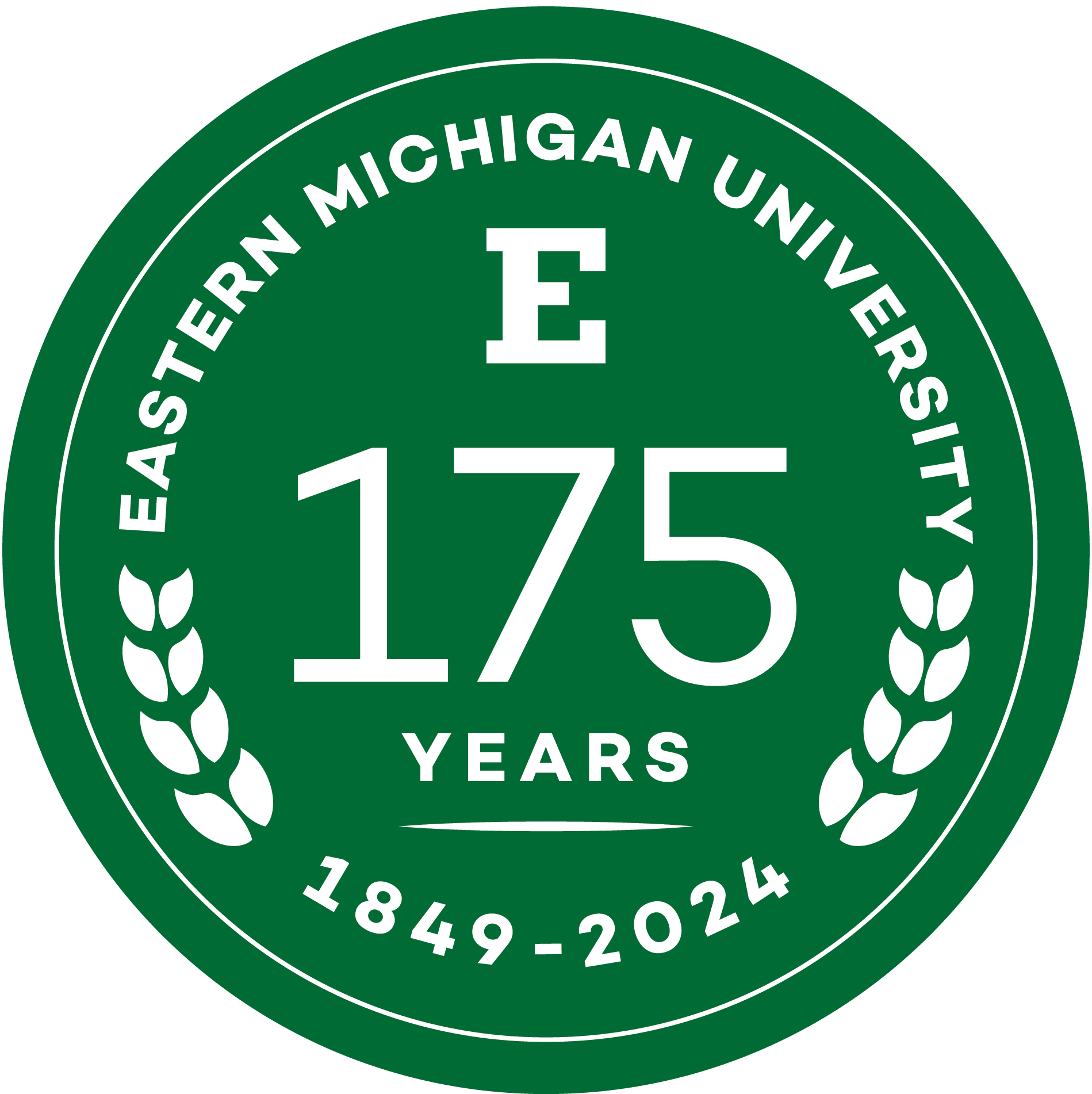EMU’s greenhouse is a hidden gem of research, education, and relaxation
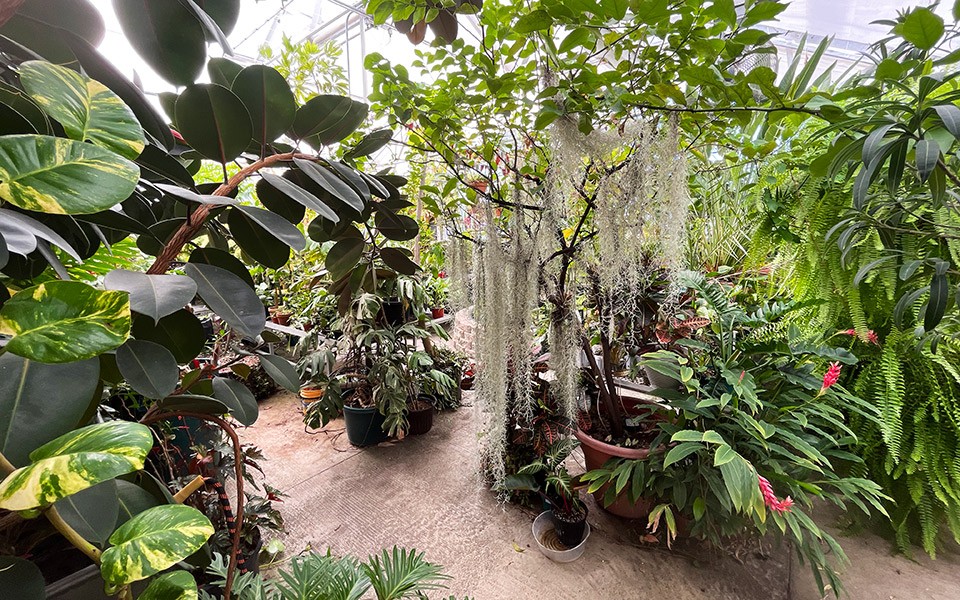
YPSILANTI - As students rush from their parking spot to class, many pass by one of the best-kept secrets on EMU’s campus—the Terrestrial and Aquatic Ecology Research Facility, more commonly known as the EMU Greenhouse. EMU students and faculty run experiments out of the greenhouse, but the space is also open to plant aficionados who appreciate lush greenery from around the world.
The greenhouse and research laboratory are housed in an unassuming building on the southern side of the Jefferson Science Complex. While the building may be understated, the inside is anything but subtle. Visitors are greeted by an entry that has two laboratory rooms where there are currently research projects on sturgeon and plants that require a controlled environment.
But past the on-site laboratories is the greenhouse. The space is divided up into three areas, including a dedicated space for biology experiments. “We like to have hands-on experiences for students,” says Natalie Dove, Interim Biology Department Head. “One of the niche things we can offer here at Eastern is that you can look at plants, you can touch them, you can understand their needs for hydration and their growth patterns.”
Dove says that during a time when online instruction is becoming more popular, the opportunity for experiential learning in the greenhouse adds another level of understanding for students. “The greenhouse facility gives students a chance to get immersed in what they’re learning,” she says. While biology students are the most common class-related visitors, the greenhouse is getting more popular with other disciplines like art.
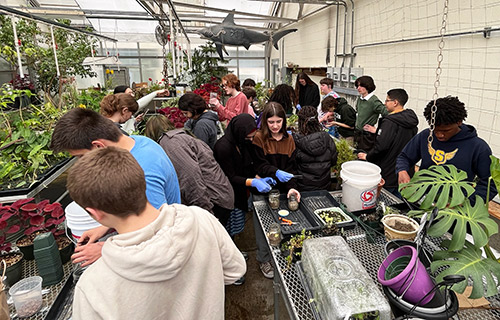
The greenhouse also hosts the Early College Alliance (ECA) students. As part of the ECA program, high school students can take classes and get college credits while still in high school. “I spoke with their instructor and we did a little terrarium workshop for them,” says Bradley Cross (BS17), greenhouse coordinator. “They got to take home a terrarium—it was very nice.”
Research and Relaxation
“This first room is where we do the research and propagations for outdoor gardens,” says Cross, adding that most of the experiments take place during the winter and fall semesters. Laboratory classes like Introduction to Biology and Ecology bring students into the space to conduct research. Cross says projects have covered topics like seed germination rates in burnt vs. typical soils, the effects of salt water on plant growth, and comparisons of the effects of natural or conventional cleaners on plants.
During the late spring, the room transitions to hosting a mixture of plants that will have a home somewhere on EMU’s campus. “The Giving Garden is going to be picking up, so we have a lot of the veggies starting,” says Cross. The Giving Garden is a program that provides small garden plots to people affiliated with EMU, as well as folks in the community. The vegetable seedlings will be used in the large donation plots in the garden that are used to grow food for Swoops Pantry. Cross and greenhouse staff members also grow many of the ornamental plants around the greenhouse and around the Honors College.
But it’s not all business at the greenhouse. Just beyond a workspace area is an expansive greenhouse room full of plants from around the world. You’re welcomed into the space by a “rubber tree that’s trying to take over the world,” says Cross, pointing to the towering greenery that is obviously thriving. The room is packed with plants and is set up to mimic a natural environment with some shady areas, natural vegetation canopies, and co-habitation between plants and bromeliads (or air plants). The diversity of plants in such a compact space is impressive. One minute you are passing an orchid whose blooms smell like milk chocolate, and the next you come across a plant that looks like a rock.
“This is really cool,” says Cross, bringing the South African Elephant’s Foot plant for a closer look. A delicate vine sporting heart-shaped leaves curls out from the boulder-like base. “This is a really vigorous vine that takes advantage of the rainy season,” he explains. “It’s deciduous so it will lose the vine in the dry months. Then it just seems like a dead, wooden boulder.”
Wind your way around the branches and blooms and you will arrive at a hidden gem—a cozy nook with a table and chairs. Cross says the spot is perfect for some quiet time amongst the plants, and has been used for morning meetups, a quiet space for professors to do a little exam grading, or even a spot to tap into your creative side. There is a community book on the table where visitors can jot down their thoughts, doodle their favorite plants, or even write poetry.
The greenhouse is open during the fall and winter semesters until 3 p.m. and is a lovely way to spend some time during the cold and snowy months.
About Eastern Michigan University
Founded in 1849, Eastern is the second oldest public university in Michigan. It currently serves more than 14,000 students pursuing undergraduate, graduate, specialist, doctoral and certificate degrees in the arts, sciences and professions. In all, more than 300 majors, minors and concentrations are delivered through the University's Colleges of Arts and Sciences; Business; Education; Engineering and Technology; Health and Human Services; and its graduate school. National publications regularly recognize EMU for its excellence, diversity, and commitment to applied education. Visit the University’s rankings and points of pride websites to learn more. For more information about Eastern Michigan University, visit the University's website. To stay up to date on University news, activities and announcements, visit EMU Today.
July 11, 2023
Written by:
Sarah Derouin
Media Contact:
Melissa Thrasher
mthrashe@emich.edu
734-487-4401
More Stories

Eastern Michigan University professor recognized on the 2024 Michigan Sports Hall of Fame Ballot for his love of sailing.
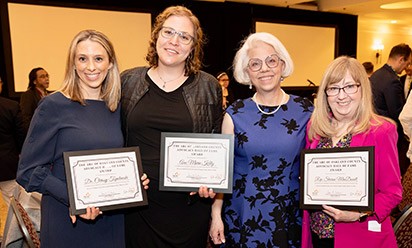
Eastern Michigan University professors receive Disability Advocacy Hall of Fame Award from The Arc of Oakland County Michigan.

Eastern Michigan University alumna, Aleksandra Efimova, leads self-made brand, RP to acquisition by renowned industry leader in dance footwear and apparel, Bloch.
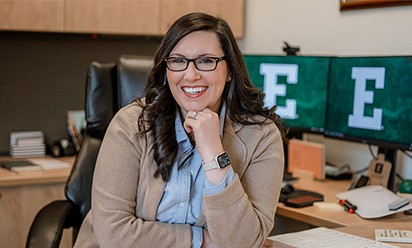
Eastern Michigan University Vice President for Enrollment Management Katie Condon-Martin to help shed light on FAFSA “fiasco” as part of Bridge Michigan Zoom discussion on April 24.

Eastern Michigan University awards Summer Research and Creative Activity Grants.

